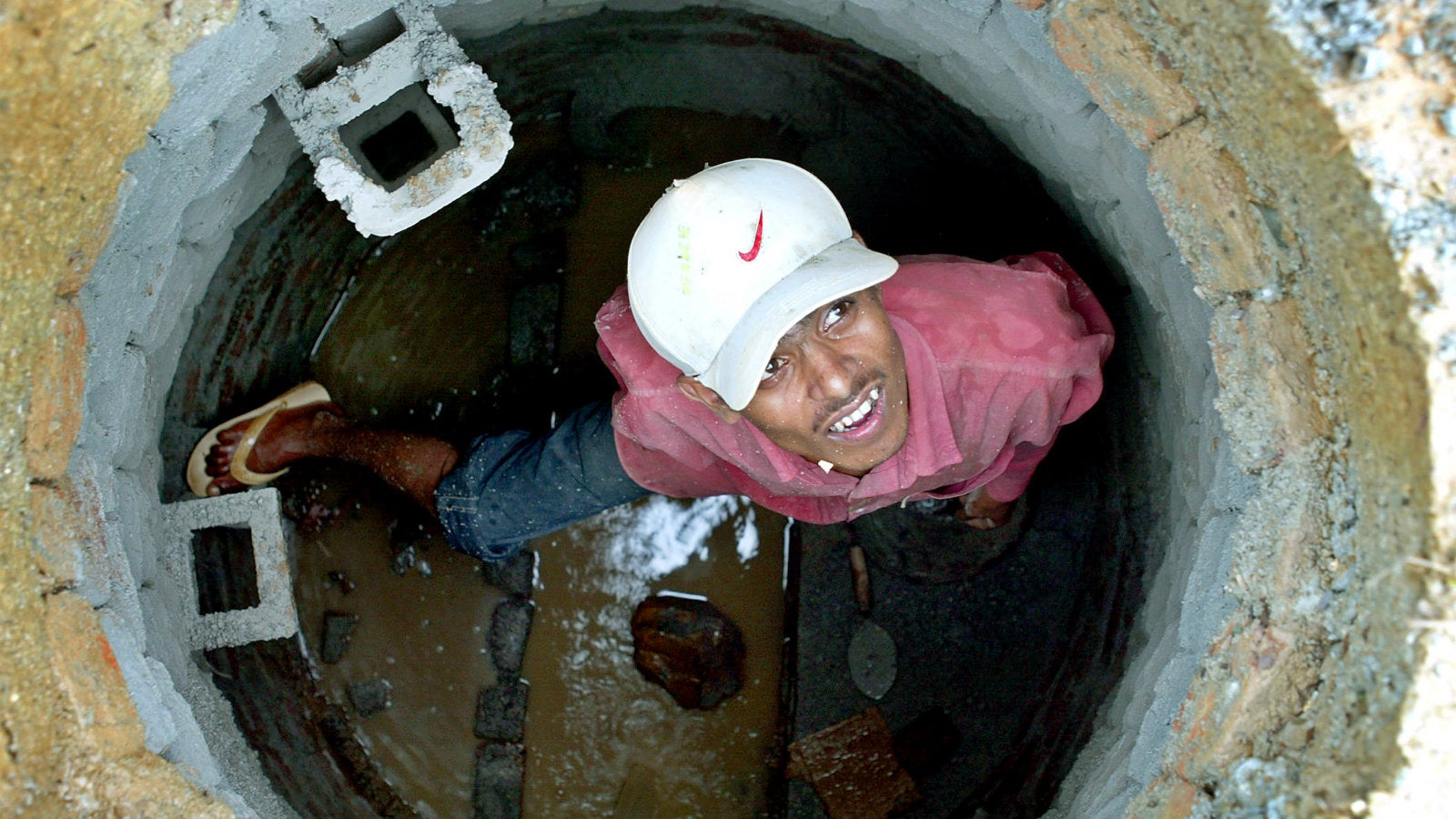The harsh reality of life for India’s 5 million sanitation workers
The last decade has seen a massive push for improved sanitation in urban and rural India, and progress has been substantial with several hundred million Indians now having access to toilets. However, while the public eye has been on big campaigns like the Swachh Bharat (Clean India) Mission, the inner workings of sanitation systems and the state of sanitation workers in these systems have often been ignored.


The last decade has seen a massive push for improved sanitation in urban and rural India, and progress has been substantial with several hundred million Indians now having access to toilets. However, while the public eye has been on big campaigns like the Swachh Bharat (Clean India) Mission, the inner workings of sanitation systems and the state of sanitation workers in these systems have often been ignored.
Sanitation systems in urban India were designed with one unfortunate assumption, which is that human labour would always be available to service them. This is a fundamental issue, and brings up challenges on many fronts.
At various steps across our sanitation value chain—from the toilets to the treatment plants—workers must interact with faecal matter in extremely unsafe ways. They are often offered inadequate safety equipment and training, and are socially and culturally ostracised. An overwhelming majority of them are from the lowest Dalit sub-castes—representational of India’s traditional caste hierarchies and the manner in which these function.
Usually engaged through informal contracts, they work for local governments and private operators, or are contracted by households directly. As a result, most have poor financial and health outcomes.
While the issues faced by sanitation workers have attracted some attention, the subject at large has been treated as a matter for civil society organisations to tackle. Government efforts tend to take on a singular, narrow point of view, which focuses typically on rehabilitating rural latrine cleaners through self-employment schemes that have had mixed success.
But there has been very little strategic focus on the full range of issues that arise from unsafe sanitation work in urban areas.
A portrait of India’s sanitation workers
Motivated to fill this gap in understanding, Dalberg, a strategy and policy advisory firm focused on global development, conducted a 12-week study of sanitation workers in India, based on over 100 interviews with sanitation workers, government officials, and experts. The intent behind the study was to create a set of clear, cognisable, and actionable insights, with which stakeholders can act towards improving the working conditions and livelihoods of sanitation workers across the country.
Some key takeaways from the report are:
- Though sanitation workers have been a large unorganised category, we identified nine distinct types of sanitation work that demand separate consideration: sewer cleaning, septic tank cleaning, railway (track) cleaning, latrine cleaning, treatment plant work, community/public toilet cleaning, school toilet cleaning, sweeping/drain cleaning, and domestic work
- Only a small fraction of these workers are formally recognised. We estimate that there is a total of 5 million full-time-equivalents of sanitation workers, including domestic workers (who clean toilets in residential and commercial areas)
- Our estimates suggest that about 2.5 million of these workers face high occupational hazards in their work
- The absence of formal recognition for these workers results in very poor access to schemes and programmes purportedly designed to help them
- About 1.1 million of them are in urban areas, primarily engaged in sewer cleaning, septic tank cleaning, railway cleaning, and community/public toilet cleaning
- More than half a million urban sanitation workers are women, mostly engaged in school toilet and drain cleaning
- From our interviews and other existing research on this issue, it is clear that over 90% of the workers belong to the lowest Dalit sub-castes and are historically tied to sanitation work. As these workers migrate from rural to urban areas, they find it difficult to penetrate other job markets due to their caste labels
- Women face a specific set of challenges as they are often forced to become primary earners—since spousal income is unreliable—and they are frequently harassed on the job
- Workers often have dependencies on alcohol and other substances and suffer from poor mental health. They not only have low life expectancy and poor physical health outcomes, but many report regular fever, respiratory illnesses, and skin diseases, with an average life expectancy said to be less than 50 years
- A large proportion of these workers are in contracts with the various city corporations’ contractors and receive below-minimum wages. Often, what they earn is just one-third of what they would if employed directly by the city. To worsen matters, most do not have provident funds (PF) or health benefits either
We welcome your comments at [email protected].